The moon. For millennia it has been a perennial source of fascination for humans from almost every culture in the world. The celestial object – often perceived as a gentle balance to the mighty sun – plays an important role in many mythologies: from the Norse god Máni in the cold far north to the Egyptian god Khonsu revered by the dessert-dwelling ancient society.
Alongside with Chandra – the god of moon in Hindu mythology – who travels the night sky on his chariot to pull the moon, Ratih – the pre-Hindu goddess of moon and beauty – is also venerated by Javanese and Balinese. As Hinduism flourished in Java between the 4th – 15th century AD and still is the predominant religion in Bali, many pre-Hindu deities were absorbed into Hindu mythology, so was Ratih.
Similar with the story of Chandra, it is said that Ratih travels every night on her chariot to pull the moon from east to west. One night when she was flying over the village of Pejeng one of the wheels of her chariot fell from the sky – other versions say it was either Ratih’s ear decoration or one of the ancient moons – and landed on a tree. The mysterious object was then called Bulan Pejeng – Moon of Pejeng, treated by the locals as a sacred relic.
The small village of Pejeng had been constantly illuminated since then, by the sun during daylight and by Bulan Pejeng when night fell. Agitated by that situation, a group of thieves – who were unable to do their action at night due to the light – plotted to estinguish Bulan Pejeng’s luminosity. A rather simple idea was formulated to urinate on the magical object to deprive it from its sacredness.
They chose the bravest among them to execute the plan, the man then climbed the tree where Bulan Pejeng was stuck. Moments after he urinated on it the object began to dim, until eventually it lost its light entirely. Unaware of the consequence of his action, the thief subsequently lost his life for the magical power of Bulan Pejeng claimed it as it gradually dimmed.
On a less romantic account, there have been debates in scientific and historian communities on the origin of Bulan Pejeng. Some argue that the world’s largest single-cast bronze kettle drum was made by the nothern Vietnamese people of Đông Sơn around 300 BC – known for their bronze casting skill in creating drums which were widely spread across Southeast Asia. However further studies revealed that Bulan Pejeng has different characteristics from other kettle drums made by the Đông Sơn – collectively called Heger-type kettle drum, after Franz Heger, an Austrian anthropologist who conducted extensive studies on Southeast Asian kettle drums. He suggested that Pejeng-type kettle drums might evolve from those of Heger through time.
There is no clear evidence on what Bulan Pejeng was made for, nevertheless some suggested it might be used in ancient rainmaking rituals. Today the giant kettle drum is stored at a pelinggih – an elevated roofed pavilion – at Pura Penataran Sasih in Gianyar Regency, Bali.
* * *
Moon has inspired humans to create imaginative stories about life, love and anything else between the earth and sky. However roughly 3 km south of Pura Penataran Sasih a rock inspired another ancient Balinese society to create more realistic narratives about life, in the form of rock carvings.
The 14th century reliefs of Yeh Pulu were carved on a 2m-tall and 25m-high rock, depicting scenes of ancient Balinese daily lives: a man carrying an urn; a long-haired man riding a horse; two men hunting animals with traditional weapons; a fight between a frog and a snake; two men carrying pigs on a pole, slung over their shoulders; and a woman holding the tail of a horse.
Named after a stone container from which water flows out – yeh means water, while pulu means container – Yeh Pulu ancient reliefs lie at the edge of a rice paddy, irrigated by Balinese distinctive Subak system. No one knows for certain why the reliefs were made, leaving our imagination and further research amuse and bewilder us at the same time.
Of all daily life depictions at Yeh Pulu, the moon is absent, probably because the chariot that used to pull it lost one of its wheels.

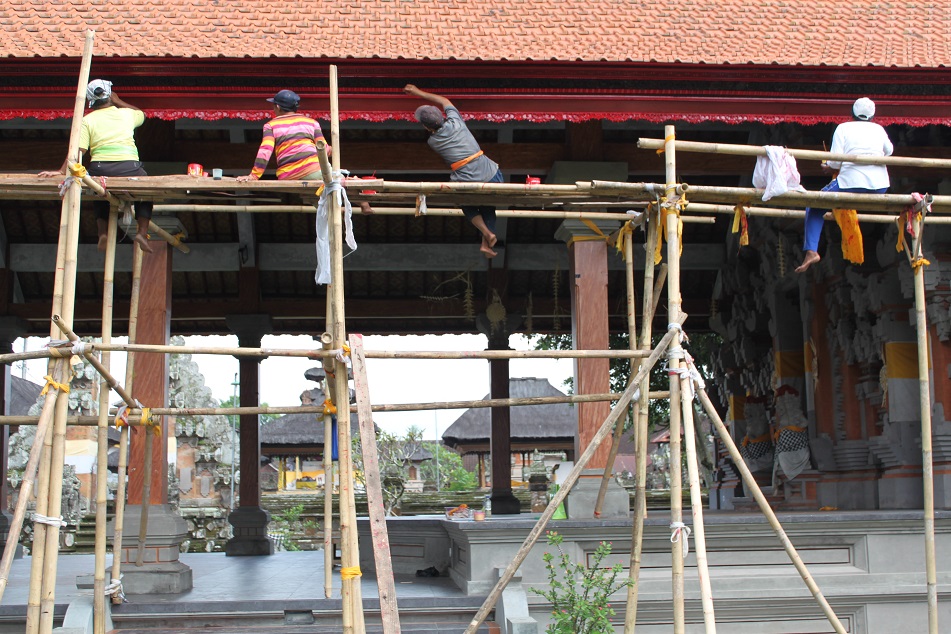

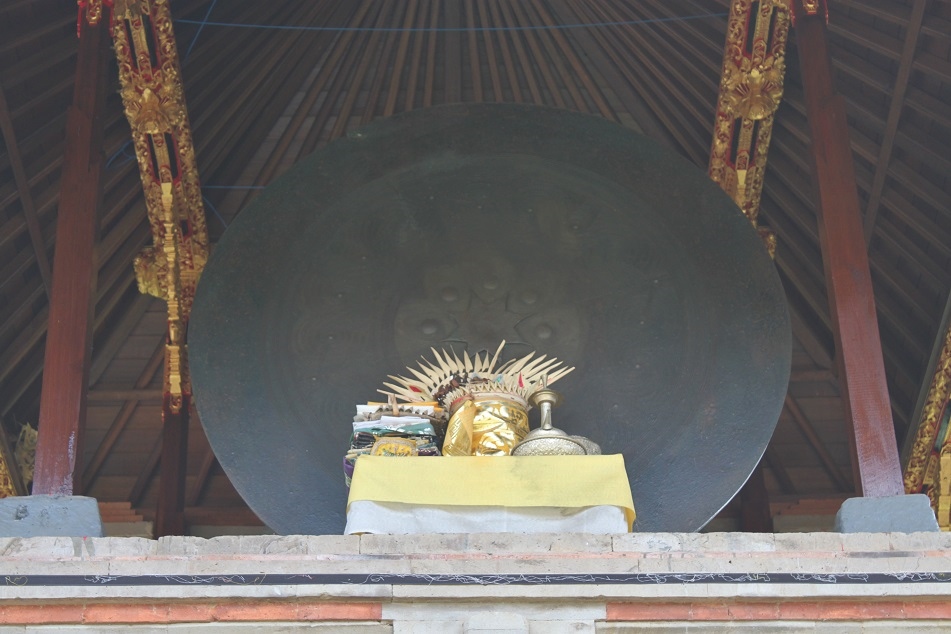
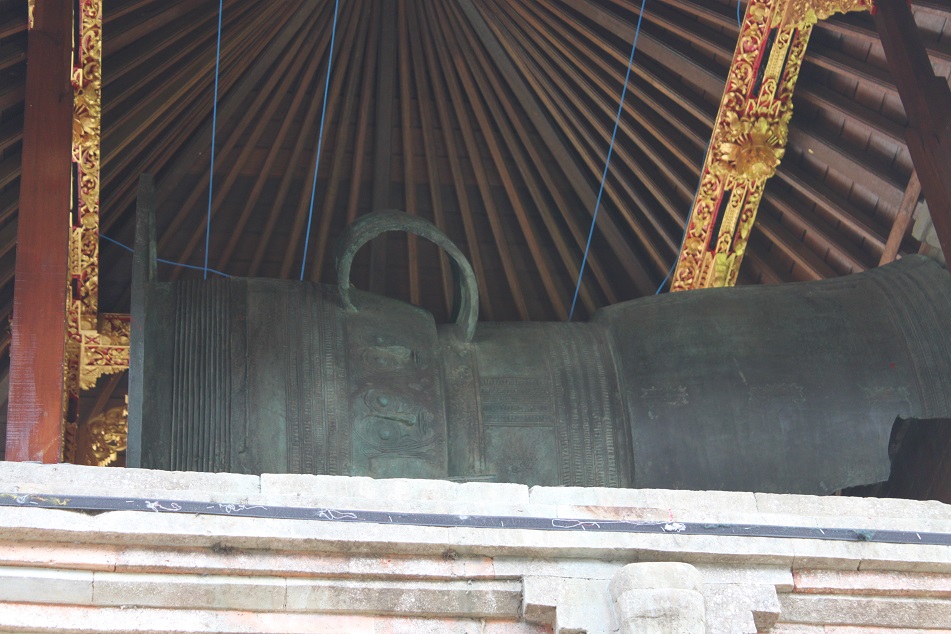
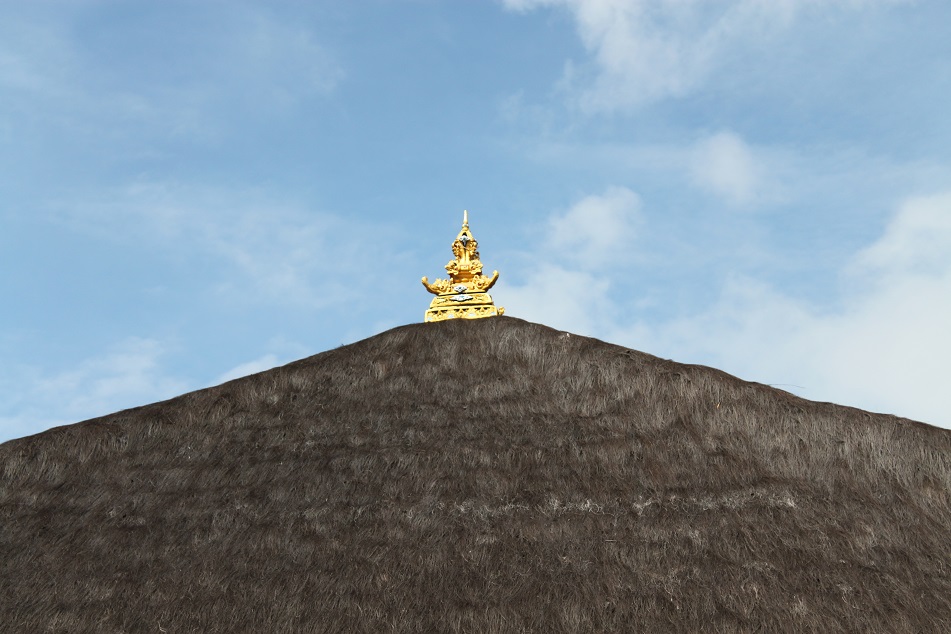
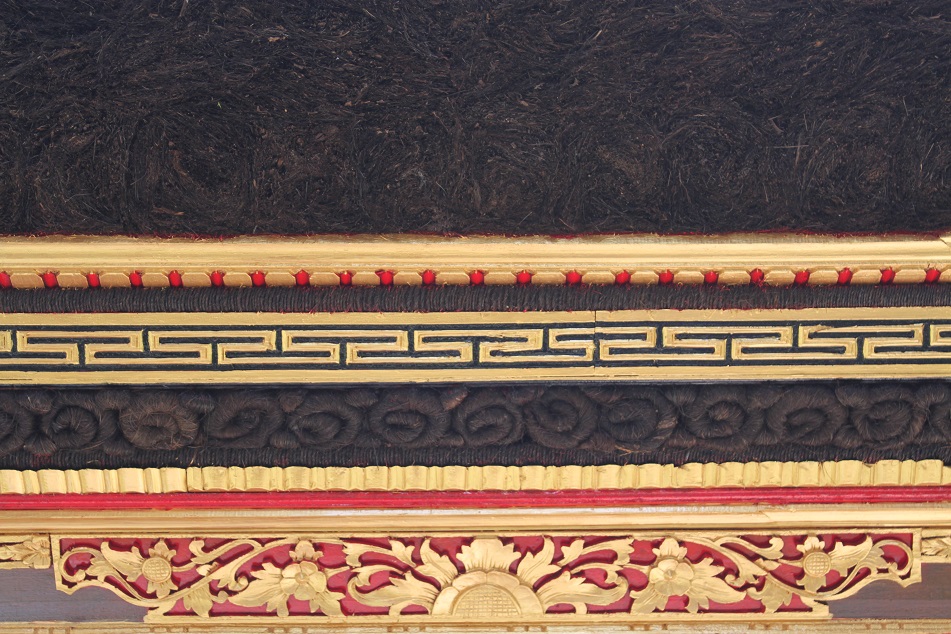
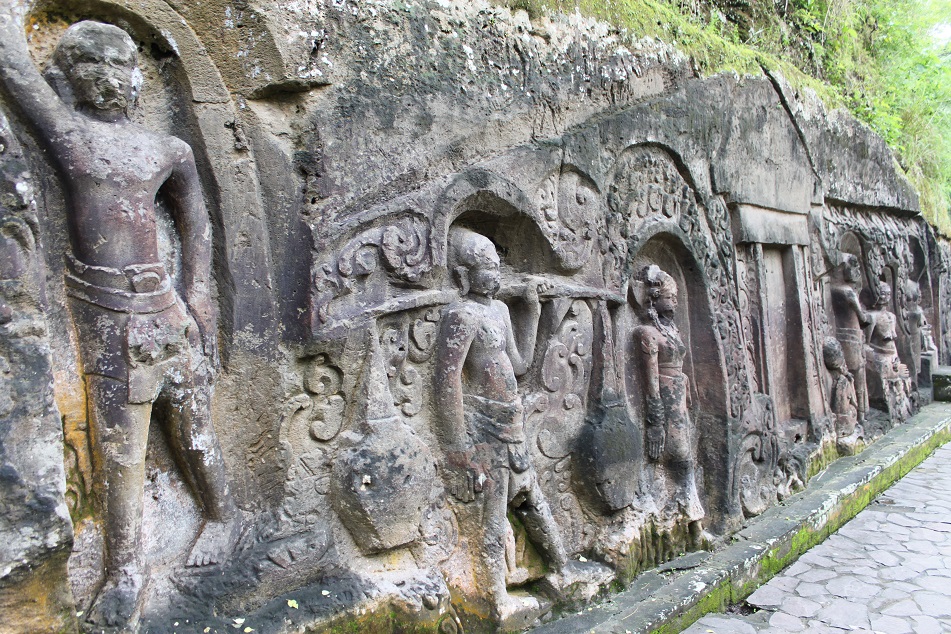
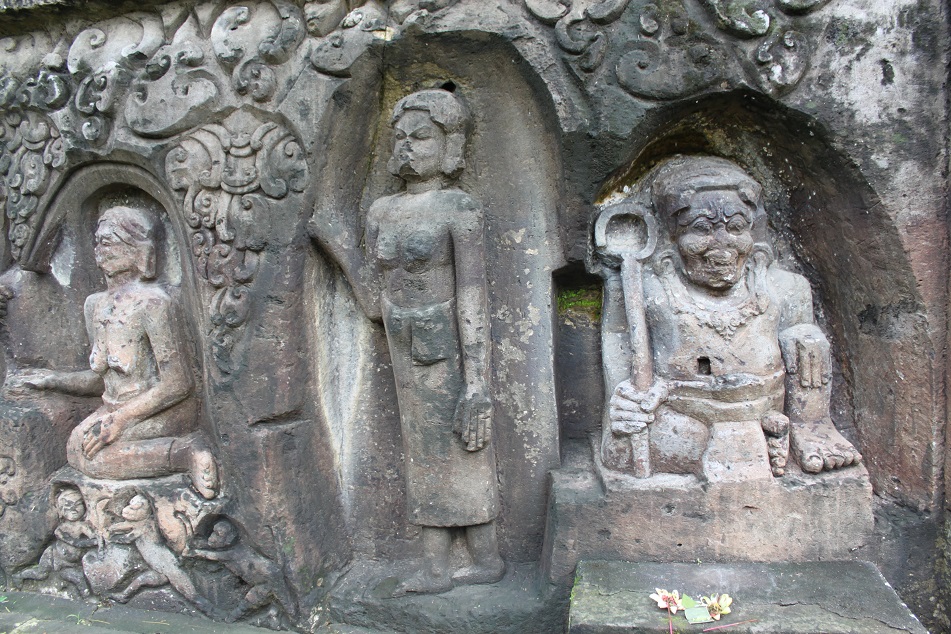

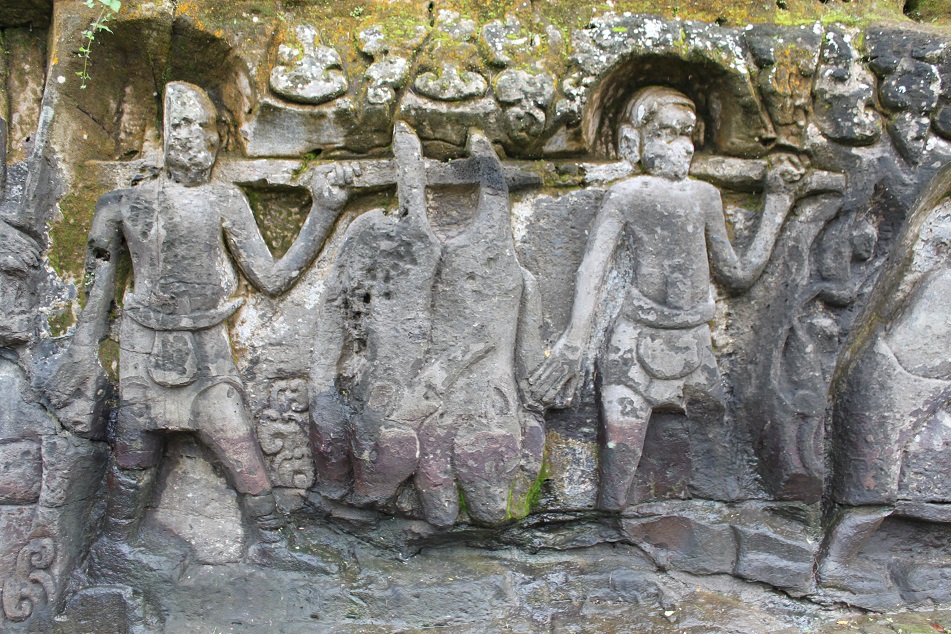


Such amazing history. Love the photos of the intricate carvings.
LikeLiked by 1 person
Thanks Sue! Surprisingly these two places are a lot less visited compared to other sites around Ubud. I believe many Indonesians are not aware of both sites.
LikeLike
Beautiful post, Bama 🙂
Enjoyed the story of chandra.
LikeLike
Thank you, Sreejith! I guess you can relate to many stories from Bali. 🙂
LikeLike
Absolutely… 🙂
LikeLike
Gorgeous photos as always, Bama – you have a real eye for detail! I do wish I was more observant at Yeh Pulu, somehow I never did get a decent photo of the water carrier and the maiden next door who had an elaborate headdress. And now I know the origin of the Indonesian name Ratih. 🙂
LikeLike
Makasih James! Actually we’re both observant in our own ways. Sometimes you captured objects that I failed to notice when we traveled. 🙂 Ratih is indeed a very common name for Indonesian women, but I myself only found out about its origin after we visited Pura Penataran Sasih.
LikeLike
It’s amazing !
LikeLike
They are less popular but equally interesting compared to other sites in Bali.
LikeLike
Bama, you always bring the beauty into the stories you write and I enjoy reading them all. And the pics, hmmm… magnifique! 🙂
LikeLike
Thank you for your kind words, Riyanti! I’m just trying to convey what I felt when I traveled through words and photos. 🙂
LikeLike
Lovely! I’ll be in Ubud (first time) in 3 weeks, I’ll go to this place.
LikeLike
3 weeks for a first timer is not bad at all. Ubud is an ideal place to launch your explorations of Bali’s highlands and many of the island’s cultural sights.
LikeLike
Oh, I meant I’m leaving in 3 weeks, I’ll be in Indonesia and Cambodia and Vietnam for 4 months—-I can’t wait!!!!!
LikeLike
Ahh I see. Enjoy Southeast Asia!
LikeLike
Thank you!
LikeLike
the moon intrigues me. Thanx for the post 🙂
LikeLike
As you said in your blog: live by the sun, love by the moon. Thanks for visiting!
LikeLike
Oh you remembered. I am touched 🙂
LikeLike
Lovely.
LikeLike
Thanks Angela!
LikeLike
I started to fall in love with your photos. Wondrous !
LikeLike
Thank you for your kind words, Amelia!
LikeLike
Wonderful story and photos. I wish I could go to them.
LikeLike
Thanks Iris! There are many places like these across Bali.
LikeLike
A fascinating legend, beautifully told Bama. The friezes are spectacular. Seems like one might have to dedicate a couple of weeks just to Bali at this rate!! 🙂
LikeLike
Thanks Madhu. Haha, I guess you’re right. But I still have a lot more stories to come. Bali is an island that never fails to impress me, indeed. 🙂
LikeLike
AMAZING BLOG! I just started a travel blog yesterday. This is some great inspiration! 🙂
LikeLike
Thank you. Let’s inspire each other! 🙂
LikeLike
Reblogged this on Quickstathelp.com.
LikeLike
Solid content and amazing photos! Thanks for sharing.
LikeLike
Thanks, Samuel! I’m glad you enjoyed this post.
LikeLike
so ethnic. i can feel the nature energy through this story. nice post 🙂
LikeLike
Hi Fahmi! Nice to have you here. 🙂 Thank you, and both places were indeed such great alternatives for Bali’s more well-known tourism sights.
LikeLike
Yeah, watta great blog bro, keep on sharing 😀
LikeLike
Thanks again, and keep on sharing too!
LikeLike